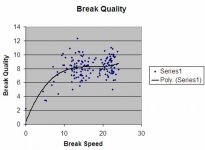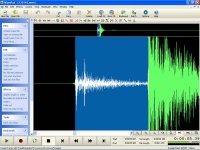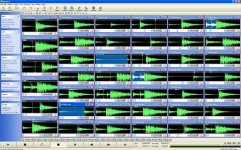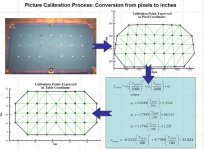I posted this in the "cue balance point" thread, but thought I'd post a new thread that is more on topic. The best I did at the time was slightly over 24 mph. I'll have to re-test again and see if I've improved. I'd be interested in tracking the results.
Here's the wavepad link: http://www.nch.com.au/wavepad/masters.html
My son and I did his science experiment to find the relationship between break speed and a measure of ball spread. To find your own break speed 1) measure the distance between where your cueball rests on the table for a normal break and the headspot, subtract 2.25" for one ball diameter, 2) use sound recorder on a PC to record the sound of your break. We used a laptop with it next to the table. Most PCs can record at 44Khz, or 44 thousand times a second, more than accurate enough. Also, forget about having to get it right in the middle. Unless your break speed is near the speed of sound its a nit. Use a sound program like Wavepad to open the file and identify the peak where the cue strikes the cueball and then the peak at rack contact. If you highlight with Wavepad it will tell you to the thousandth of a second. 3) Your break speed in mph is
(distance-2.25)/12*60/88/(measured time)
Here's his result from 150 breaks along with an example of determining the time increment.
Here's the wavepad link: http://www.nch.com.au/wavepad/masters.html
My son and I did his science experiment to find the relationship between break speed and a measure of ball spread. To find your own break speed 1) measure the distance between where your cueball rests on the table for a normal break and the headspot, subtract 2.25" for one ball diameter, 2) use sound recorder on a PC to record the sound of your break. We used a laptop with it next to the table. Most PCs can record at 44Khz, or 44 thousand times a second, more than accurate enough. Also, forget about having to get it right in the middle. Unless your break speed is near the speed of sound its a nit. Use a sound program like Wavepad to open the file and identify the peak where the cue strikes the cueball and then the peak at rack contact. If you highlight with Wavepad it will tell you to the thousandth of a second. 3) Your break speed in mph is
(distance-2.25)/12*60/88/(measured time)
Here's his result from 150 breaks along with an example of determining the time increment.



